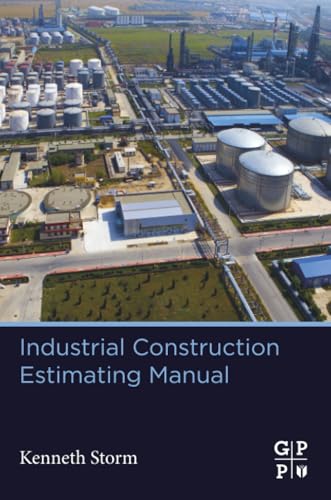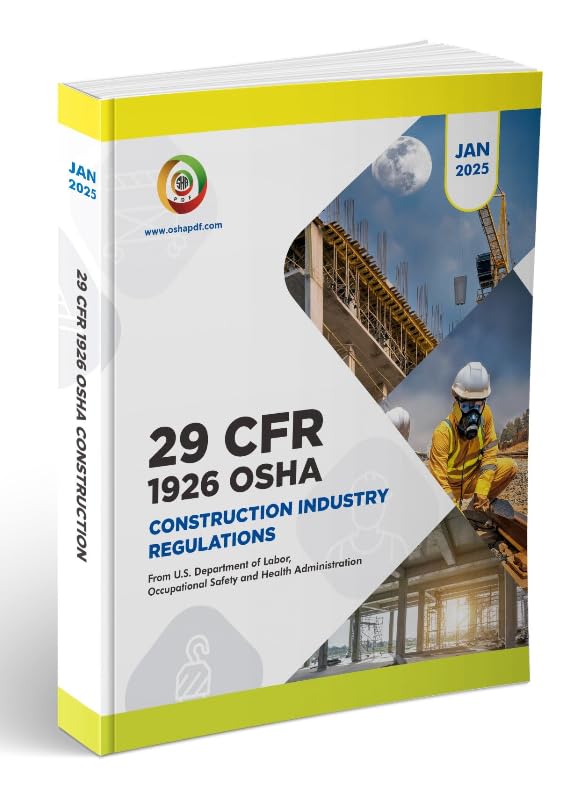There’s a specific kind of exhaustion that sets in after a ten-hour shift on your feet. It’s not just physical; it’s a deep, bone-weary fatigue that starts in the soles of your feet and radiates upward. For years, I’ve been on a quest for the perfect work shoe—a mythical creature that combines the professional polish of a dress oxford with the rugged soul of a work boot and the cloud-like comfort of a high-end sneaker. Too often, the choice is a compromise. You either get a shoe that looks the part but leaves your feet aching by lunch, or a comfortable, supportive shoe that looks completely out of place in an office or client-facing environment. The real challenge is finding one that offers comfort, safety, and style, and—most importantly—can actually survive the daily grind for more than a few months. It’s this very challenge that led us to test the Dr. Scholl’s Harrington II Slip Resistant Work Oxford, a shoe that promises to be the solution to this long-standing dilemma.
- Oil-resistant, slip-resistant Lock Step OutsoleTM meets SATRA TM63 and TM144 standards
- In independent lab testing, our shoes beat manufacture average for comfort and cushionig. HeeluxeTM...
What to Demand From Your Next Pair of Work Oxfords
A work oxford in the Industrial & Construction category is more than just an item of footwear; it’s a key solution for professionals who bridge the gap between the front office and the workshop floor. It’s for the restaurant manager who moves from greeting guests to inspecting a slippery kitchen, or the site foreman who needs to look presentable for a meeting after walking the grounds. The main benefits are clear: they provide a professional appearance without sacrificing critical safety features like slip resistance and all-day support. They are designed to prevent fatigue, reduce the risk of workplace accidents, and maintain a polished image.
The ideal customer for this type of product is someone facing long hours on their feet across varied surfaces, from slick tile to polished concrete. This includes hospitality workers, retail managers, healthcare professionals, and light-duty industrial supervisors. They value comfort and safety but cannot compromise on a business-casual aesthetic. However, this shoe might not be suitable for those who work in heavy construction, require steel-toe protection, or are exposed to harsh chemicals or extreme abrasion. For those individuals, a dedicated work boot like the Timberland PRO series would be a far more appropriate choice.
Before investing, consider these crucial points in detail:
- Safety & Slip Resistance: This is non-negotiable. Look for specific standards, such as SATRA TM63 and TM144, which indicate rigorous testing on oily and wet surfaces. The outsole material and tread pattern are paramount; a high-quality rubber compound with deep, well-designed channels will provide the best traction and prevent slips, a leading cause of workplace injuries.
- Comfort & Support: Performance is measured in hours, not miles. A shoe’s comfort system, including the insole, midsole, and overall anatomical design, determines whether you end your day feeling fine or feeling excruciating pain. Look for features like memory foam, anatomical cushioning, and shock-absorbing midsoles that reduce pressure on key points of the foot.
- Materials & Durability: The finest comfort technology in the world is useless if the shoe falls apart. The upper material—be it full-grain leather, synthetic leather, or a composite—dictates both the look and the lifespan. Pay close attention to the construction method; a glued or cemented sole is common at lower price points but is far more prone to separation than a Goodyear welted or stitched construction.
- Fit & Sizing: An ill-fitting work shoe is a recipe for disaster, leading to blisters, pain, and a lack of stability. Consider brands that offer wide sizing options if you have broader feet. Remember that your feet can swell throughout a long workday, so a shoe that feels snug in the morning might feel torturous by the evening.
While the Dr. Scholl’s Harrington II Slip Resistant Work Oxford presents itself as a contender, it’s always wise to understand the broader landscape of work-ready equipment. For a deeper look at essential industrial tools, we highly recommend checking out our complete, in-depth guide:
Our Comprehensive Guide to the Best Quiet Rotary Screw Air Compressors for Industrial Shops
Unboxing and First Impressions: A Deceptive Debut
Pulling the Dr. Scholl’s Harrington II Slip Resistant Work Oxford from its box, our initial reaction was genuinely positive. The shoe has a classic, unassuming oxford design that looks right at home in a professional setting. The black leather upper had a decent, uniform finish, and the overall profile was clean and understated. Weighing them in hand, the lightweight construction was immediately noticeable—a welcome feature for anyone dreading the clunky, heavy feel of traditional work boots. The four-eyelet lacing system was standard and easy to use.
Slipping them on for the first time, the promised comfort was undeniable. The insole felt soft yet supportive, with noticeable cushioning around the heel and arch. There was no immediate stiffness or uncomfortable rubbing that often accompanies new leather shoes. Out of the box, it felt like a shoe that was ready to go without a painful break-in period. The Lock Step Outsole™ had a complex tread pattern that looked grippy and capable. At first glance and first wear, this shoe made a compelling case for itself as a perfect blend of comfort and class. Unfortunately, this glowing first impression would prove to be tragically short-lived.
What We Like
- Excellent out-of-the-box comfort with no break-in period
- Professional and versatile oxford style suitable for many workplaces
- Very lightweight construction reduces foot fatigue
- Initially effective slip-resistant outsole on various surfaces
What We Didn’t Like
- Catastrophically poor durability; soles separate within weeks or months
- Low-quality materials that scuff, crease, and delaminate almost immediately
Performance Under Pressure: A Deep Dive into the Harrington II’s Rise and Fall
A work shoe’s true worth is only revealed over time, through the crucible of daily wear. It’s in the long shifts, the unexpected spills, and the constant movement that its character—or lack thereof—comes to light. Our in-depth testing of the Dr. Scholl’s Harrington II Slip Resistant Work Oxford was a journey of dramatic contrasts, beginning with impressive comfort and ending in profound disappointment. We broke down our analysis into the key areas that matter most to a working professional.
The Promise of All-Day Comfort: A Brief Honeymoon
Dr. Scholl’s built its brand on foot comfort, and in this regard, the Harrington II initially delivers on its heritage. The moment we put the shoes on, the “Insole Technology” was evident. It’s an anatomical footbed that provides a pleasant level of cushioning that feels both soft and supportive. During the first few days of testing, which involved long periods of walking and standing on hard tile floors, our feet felt remarkably fresh. The midsole does an admirable job of absorbing shock, and the lightweight nature of the shoe meant we didn’t feel like we were dragging anchors around by the end of the day. This aligns perfectly with feedback from many users who, like us, awarded the shoe top marks for comfort right out of the box. One user specifically stated, “For comfort I give it 5 stars,” a sentiment we wholeheartedly agreed with during the initial testing phase.
The fit of our 10.5 Wide pair was as expected—generous in the toe box without feeling sloppy. It accommodates wider feet well, which is a significant plus. For the first week or two, this shoe felt like a game-changer. We could move seamlessly from an office environment to a warehouse floor without needing to change footwear and, more importantly, without the nagging foot pain that usually signals the end of a long workday. It was, for a fleeting moment, everything we were looking for. If you’re intrigued by this level of initial comfort, you can see its full feature set and learn more about the underlying technology.
On Shaky Ground: Evaluating the Lock Step Outsole™
A primary selling point of the Dr. Scholl’s Harrington II Slip Resistant Work Oxford is its safety-rated Lock Step Outsole™. The manufacturer states it meets SATRA TM63 and TM144 standards for oil and slip resistance, and we were keen to put this to the test. On a variety of surfaces—including wet vinyl tile, polished concrete, and even a deliberately oiled steel plate in our workshop—the initial grip was impressive. The outsole compound felt tacky and secure, providing a confident footing that is essential in any workplace where spills are a possibility. One user who worked in a commercial kitchen corroborated our findings, noting that the shoes did provide safety on a slippery floor when they were new.
However, the effectiveness of a safety tread is directly tied to its durability, and this is where the outsole began to reveal a critical flaw. Within just a couple of weeks of moderate use, primarily walking in an office and warehouse setting, we noticed visible wear on the key contact points of the tread. This rapid degradation was alarming. Numerous users reported the same phenomenon, with some stating the treads were “worn off within a couple days” or had “lost their non-slip traction” within four months. This rapid wear completely undermines the shoe’s core safety feature. A slip-resistant shoe that isn’t slip-resistant after a month of use is not a slip-resistant shoe; it’s a hazard waiting to happen.
The Elephant in the Room: A Crisis of Durability
This is, without question, the section where the Dr. Scholl’s Harrington II Slip Resistant Work Oxford fails on every conceivable level. The comfort and initial safety performance become utterly irrelevant in the face of its catastrophic lack of durability. The problem isn’t a single weak point; it’s a systemic failure of materials and construction that manifests in multiple ways, all of them leading to a shoe that becomes unwearable in a shockingly short period.
Our experience began around the three-week mark. We noticed the thin rubber layer of the tread on the heel of one shoe had begun to peel away from the midsole. This is not minor wear and tear; this is structural failure. We could feel the flap of rubber catching on the floor mat while driving, a precise experience echoed by another user. This problem escalated quickly. By the end of the first month, the delamination had spread. This issue is the single most common complaint we found, with a torrent of users reporting that the “tread which is bonded to the bottom of the shoe started to peel off,” the “outsole on the right shoe is splitting from the midsole,” or, more simply, the “soles are falling off.” Many attempted to fix it with super glue or gorilla glue, but these were temporary, failed measures against what is clearly a fundamental manufacturing defect.
Simultaneously, the “leather” upper began to show its poor quality. It wasn’t just creasing; the top finish started to delaminate and flake, particularly around the toe box where the shoe flexes. After just two days of light office wear, one user noted the shoes “look like they are months old” due to permanent, unsightly creasing. Our pair suffered the same fate. The material feels less like genuine, durable leather and more like a bonded composite that simply cannot withstand the stress of being worn. The stitching, particularly around the padded ankle collar, also started to come undone. For a shoe to be “falling apart” within a timeframe of one to four months, even with light office use, is simply unacceptable. It’s a testament to poor quality control and material sourcing that completely negates any positive attributes the shoe may have. We can’t in good conscience recommend a product with such a consistent and severe pattern of failure, though you can check the latest price and availability for yourself.
What Other Users Are Saying
Our findings are not an isolated incident; they are a reflection of a broad and consistent consensus among other buyers. The user feedback for the Dr. Scholl’s Harrington II Slip Resistant Work Oxford tells a unified story of a product that makes a great first impression before quickly and completely falling apart.
Positive comments almost universally focus on the shoe’s initial state. Many users, like us, praised the out-of-the-box comfort and lightweight feel. Remarks like “The shoes look really nice and are very comfortable” are common, establishing the “honeymoon” period we also experienced. However, this praise is almost always a preface to a story of disappointment.
The negative feedback is overwhelming and centers on the catastrophic lack of durability. We saw a deluge of reports confirming our experience of sole separation. One user stated, “after owning the shoe for less than six months the outsole on the right shoe is splitting from the midsole.” Another noted, “a month after wearing the shoes, the tread which is bonded to the bottom of the shoe started to peel off.” The timeline for these failures ranges from a few days to a few months, but the outcome is the same: a shoe that becomes unwearable. This feedback validates our conclusion that the issue is not a random defect but a widespread quality control failure.
How Does the Harrington II Compare to the Competition?
Given the significant durability issues with the Dr. Scholl’s Harrington II Slip Resistant Work Oxford, it’s essential to consider alternatives that may offer a better long-term value. We’ve compared it to three other popular options in the work footwear space, each catering to slightly different needs.
1. Dr. Martens 1461 Oxford Work Shoe
- Original 1461 design, with heritage Docs DNA like yellow welt stitching, 3 eyes and a grooved...
- DM's iconic air-cushioned sole, re-engineered with an enhanced grip for next-level slip resistance:...
The Dr. Martens 1461 is an icon for a reason. Its primary advantage over the Harrington II is its vastly superior construction. Built with a Goodyear welt, the sole is stitched and heat-sealed to the upper, making separation virtually impossible. The leather is thicker and more durable, though it requires a significant break-in period, which is the complete opposite of the Harrington II’s instant comfort. While it also features a slip-resistant sole, its overall aesthetic is more fashion-forward and rebellious. This is the ideal choice for someone who values legendary durability and iconic style above all else and is willing to invest the time to break in the shoe for a custom, long-lasting fit.
2. Timberland PRO 6IN Steel Toe Work Boot
- Waterproof nubuck leather upper
- Timberland PRO 24/7 comfort system to reduce foot fatigue
This is a completely different class of footwear and serves as an alternative for those who realize an oxford simply doesn’t provide enough protection. The Timberland PRO is a heavy-duty work boot with a steel safety toe, superior ankle support, and rugged construction designed for demanding job sites. Its MaxTRAX slip-resistant sole is built for extreme conditions. While it lacks the professional, business-casual look of the Harrington II, it offers exponentially more protection and durability. If your “workplace” includes construction, heavy machinery, or unpredictable outdoor terrain, this boot is the proper tool for the job, whereas the Harrington II would be dangerously inadequate.
3. SUREWAY Mens Work Boots Composite/Steel Toe
- Digging into every detail of work boots & 6 months Manufacture Guarantee:SUREWAY digs deep into...
- Thicker Preimium Full Grain Leather Work Boots for Men:Premium full-grain leather upper with...
The SUREWAY work boot offers a middle ground, often featuring a stylish Moc Toe design that is more casual than a traditional boot but more rugged than an oxford. Like the Dr. Martens, it emphasizes durable construction with full-grain leather and Goodyear welt construction, promising a much longer lifespan than the Harrington II. It provides options for soft, composite, or steel toes, allowing users to tailor the level of protection to their needs. This boot is a fantastic alternative for tradesmen, workshop professionals, and anyone who wants a durable, comfortable, and well-made shoe that prioritizes longevity and function over a formal oxford appearance.
Our Final Verdict: A Short-Lived Relationship
In the final analysis, the Dr. Scholl’s Harrington II Slip Resistant Work Oxford is a product defined by a tragic and irreconcilable conflict. It successfully delivers on its promise of immediate, out-of-the-box comfort in a lightweight, professional package. For the first few days or even weeks, it feels like the perfect solution for long hours on your feet. Unfortunately, this stellar first impression is built on a foundation of poor materials and abysmal construction that is destined to fail. The consistent, rapid, and catastrophic deterioration of the sole and upper makes this shoe impossible to recommend for anyone seeking a reliable daily work shoe.
We would only suggest this shoe under very specific, niche circumstances: if you need a comfortable, slip-resistant shoe for a single event or for extremely infrequent, light wear. For anyone who intends to wear their work shoes on a regular basis, this is not an investment; it is a disposable product with a shockingly short lifespan. The initial comfort simply cannot justify a shoe that falls apart in a matter of months. If you need a work shoe that lasts, we strongly urge you to consider more durably constructed alternatives. If you’re still curious despite the overwhelming durability concerns, you can explore the product details and make your own decision.







